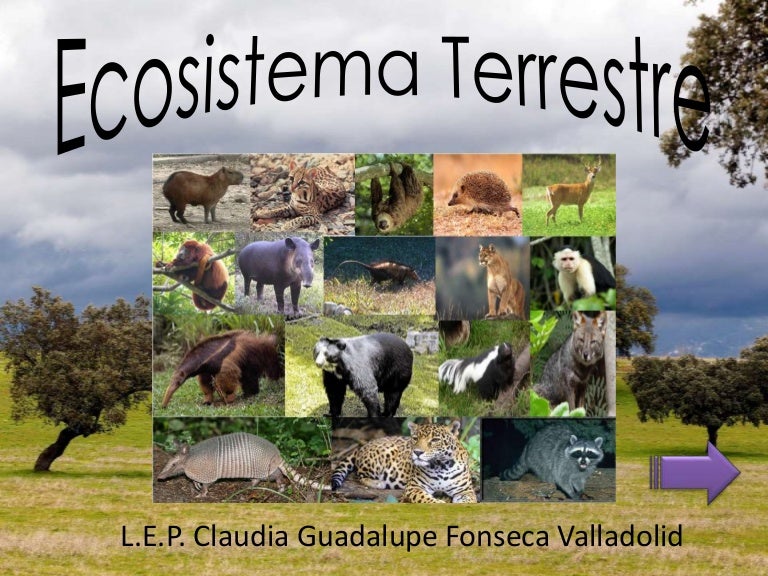Animales del ecosistema terrestre: 140 Ejemplos de Animales Terrestres y Acuáticos
140 Ejemplos de Animales Terrestres y Acuáticos
Una de las clasificaciones más habituales divide a los animales terrestres de los acuáticos, en función del medio en el que viven. La distinción, en realidad, suele estar asociada al mecanismo de respiración, puesto que es frecuente que los animales terrestres incorporen el oxígeno del aire, mientras que los acuáticos tengan branquias para extraer el oxígeno disuelto en el agua. Por ejemplo: calamar, medusa, camello, lobo.
Animales acuáticos
Los animales acuáticos son aquellos que dependen del agua para subsistir, la mayoría de los cuales son capaces de respirar en ella. Existen algunos, sin embargo, que pese a ser acuáticos deben asomarse a la superficie para captar el oxígeno.
En general, la contextura física de los animales acuáticos es especial y está asociada con esta necesidad de vivir en ese ambiente, ya que algunos poseen aletas, otros discos basales o caparazones: esta clase de animales debió adaptarse al ámbito de vida del mar, a las mareas y a las distintas corrientes de agua que se producen. Las escamas y la sangre pálida son también formas de manifestación de este tipo de vida, ya que debieron adaptarse a las diferentes temperaturas del agua.
Las escamas y la sangre pálida son también formas de manifestación de este tipo de vida, ya que debieron adaptarse a las diferentes temperaturas del agua.
Tal vez la clase de animal más propia del medio acuático sean los peces, que no necesitan salir del agua para ninguna de sus necesidades (más bien, salir del agua es lo que los mata). La enorme cantidad de peces del mundo hace que sean un grupo en sí mismo, perteneciente al grupo de los vertebrados con branquias para respirar de manera subacuática. Sin embargo, muchos de los animales acuáticos forman parte de otras categorías, como la de los mamíferos acuáticos o los equinodermos acuáticos.
Ejemplos de animales acuáticos
| Calamar | Foca | Delfín |
| Pez león | León Marino | Cachalote |
| Ballena franca | Ancistrus común | Ballena azul |
| Anguila eléctrica | Medusa | Ballena gris |
| Pepino de mar | Sepia | Tiburón ballena |
| Sardinas | Gamba | Calderón común |
| Manatí | Trucha común | Cíclico nacarado |
| Pulpo | Pulpo de anillos azules | Tetra de Aleta Sangrante |
| Pez arquero | Pez cola de espada | Caracol de mar |
| Pez sapo peludo | Pez luna | Tiburón blanco |
| Arenques | Cíclido cebra | Dragón de mar |
| Carpas | Pez espada | Tortuga marina |
| Tetra cavernícola | Pez globo | Pez mariposa |
| Langosta | Carpa dorada | Pez loro |
| Atún | Cerdo marino | Salmón |
| Almeja | Coral | Rodaballo |
| Tortuga | Mojarrita | Pez óscar |
| Piraña | Marsopa | Pez volador |
| Boca de fuego | Tintorera | Pingüino |
| Bacalao | Nécora | Acara azul |
| Caballito de mar | Mejillón | Salmones |
| Estrella de mar | Orca | Pez telescopio |
| Pez oso | Erizo de mar | Surubí |
Animales terrestres
Vivir y trasladarse por la tierra o por el aire es la característica principal de los animales terrestres. Esta característica es lo que hace que todos los animales sobre los que puede haber dudas se inscriban en la categoría de los terrestres: pertenecen a este grupo los animales que viven sobre la tierra pero que pasan gran parte del tiempo en el agua, o bien los insectos o cangrejos que tienen una etapa acuática en el ciclo vital.
Esta característica es lo que hace que todos los animales sobre los que puede haber dudas se inscriban en la categoría de los terrestres: pertenecen a este grupo los animales que viven sobre la tierra pero que pasan gran parte del tiempo en el agua, o bien los insectos o cangrejos que tienen una etapa acuática en el ciclo vital.
Según la ciencia del origen de las especies, los animales terrestres no fueron los primeros en aparecer, sino que éstos descendieron de los animales acuáticos.
Existió, entonces, una transición desde la posibilidad de vivir en el medio acuático al terrestre (las evidencias fósiles indican que las primeras incursiones en la tierra hechas por criaturas marítimas fueron hace unos 530 millones de años). Para una gran cantidad de animales, la posibilidad de vivir en el medio terrestre se adquirió durante el período paleozoico o el mesozoico, y para algunos menos durante el cenozoico.
Dentro de la categoría de los terrestres, puede hacerse una clasificación por el tipo de alimentación (entre carnívoros, herbívoros, omnívoros y frugívoros), o bien una clasificación por la clase de animal (entre mamíferos, aves, anfibios, moluscos y equinodermos).
Ejemplos de animales terrestres
| Camello | Lobo | Topo |
| Liebre | Pantera | Gallina |
| Gato | Perro | Tarántula |
| Oveja | Cerdo | Iguana |
| Búfalo | Gusano | Mapache |
| Alce | Escorpión | Elefante |
| Dromedario | Venado | Oso Polar |
| Araña | Rinoceronte | Mula |
| Orangután | Rata | Chita |
| Avestruz | Leopardo | Gorila |
| Serpiente | Ganso | Ratón |
| Cocodrilo | Tigre | Anaconda |
| Gallo | Ñandú | Caballo |
| Pingüino | Cabra | Jaguar |
| Vaca | Víbora | Castor |
| Rana | Canguro | Hámster |
| Conejo | Asno | Lagartija |
| Becerro | Alacrán | Mandril |
| Armadillo | Caimán | Oso |
| Camaleón | Tortuga | Viuda |
| Koala | Ardilla | Hormiga |
| Burro | Jirafa | León |
| Mono | Chango | Toro |
Sigue con:
¿Cómo citar?
“Animales terrestres y acuáticos”.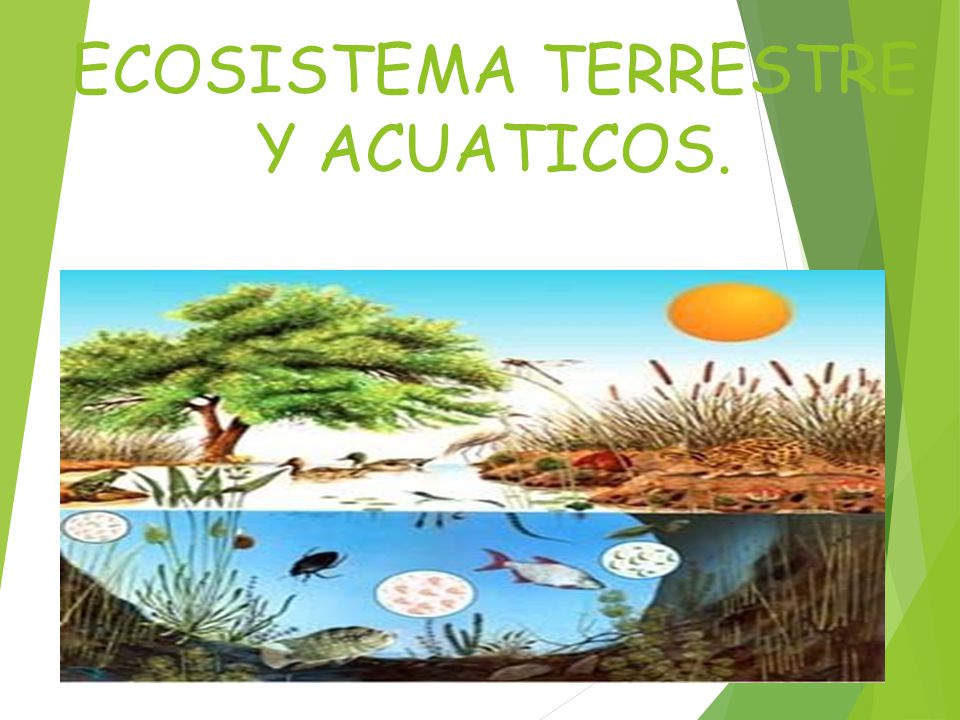 Autor: Equipo editorial, Etecé. De: Argentina. Para: Concepto.de.
Autor: Equipo editorial, Etecé. De: Argentina. Para: Concepto.de.
Disponible en: https://www.ejemplos.co/100-ejemplos-de-animales-terrestres-y-acuaticos/.
Última edición: 31 de agosto de 2022.
Consultado:
27 de septiembre de 2022
Sobre el autor
Última edición: 31 agosto, 2022
Compartir
Animales Terrestres
Animales que viven en la superficie de la tierra o subsuelo
El siguiente artículo trata todo lo relacionado con los animales que se desenvuelven en el suelo o en la tierra, a diferencia de los acuáticos que lo hacen en el agua. Sin embargo, existen una diversidad de especies que lo hacen en ambos ecosistemas.
Animales Terrestres
Los animales terrestres son animales que viven predominante o totalmente en la tierra, a diferencia de los animales acuáticos, que viven predominante o totalmente en el agua o los anfibios, que dependen de la combinación de hábitats terrestres y acuáticos.
Los animales terrestres, definidos por la zoología, son aquellos que comprenden a los que habitan la tierra. Su cuerpo está listo para gatear, caminar, correr, escalar o saltar, dependiendo del ecosistema en el que viven.
A diferencia de los animales acuáticos, aéreos o terrestres, los animales terrestres pasan la mayor parte de su tiempo y cumplen la mayoría de sus procesos biológicos y funciones vitales en el suelo terrestre.
Características Animales Terrestres
- Habitan en la tierra.
- Se desarrolla en el suelo en diversos biomas o ecosistemas terrestres.
- Algunos corren, trepan, reptan, vuelan, se arrastran, oras características de movimientos.
- Su reproducción es por fecundación interna.
- Puede ser sustanciales, de variados tamaños, independientes o no y predominantes.
- Pueden ser Vertebrados e invertebrados.
- Pueden ser vivíparos como ovíparos.

- Su respiración es pulmonar.
- Su alimentación es variada.
- Dependencia biológica de otros espacios como el aire y el agua.
Clasificación Animales Terrestres
El término terrestre se suele aplicar a especies que viven primariamente en el suelo, a diferencia de las especies arborícolas, que viven principalmente en los árboles.
Existen otros términos menos comunes que se aplican a grupos específicos de animales terrestres:
- Los saxícolas son animales que viven en las rocas. La palabra saxícola deriva del latín Saxum que significa «roca».
- Los arenícolas viven en la arena.
- Los troglobitas viven predominantemente en cuevas.
Según su reproducción en: vivíparos, ovíparos y ovovivíparos.
Según si tienen huesos en: vertebrados e invertebrados. Como en mamíferos, reptiles, anfibios, peces y aves.
Según sus filos: en Platelminto, Nemertinos, Anélidos, Tardígrados, Artrópodos, Onicóforos, Moluscos, Nematodos, Cordado y Rotíferos.
Según su alimentación: herbívoros, omnívoros y carnívoros.
Según su tipo de ecosistema en: bosques, selvas, sabanas, taiga, praderas, tundra, desierto.
Ejemplos Animales Terrestres
- Camello
- Lobo
- Liebre
- Pantera
- Gato
- Perro
- Oveja
- Cerdo
- Búfalo
- Gusano
- Alce
- Escorpión
- Dromedario
- Venado
- Araña
- Rinoceronte
- Orangután
- Rata
- Avestruz
- Leopardo
- Serpiente
- Ganso
Imágenes de Animales Terrestres
Conclusiones
El término terrestre en biología generalmente se usa para describir organismos vivos que viven y crecen en la tierra.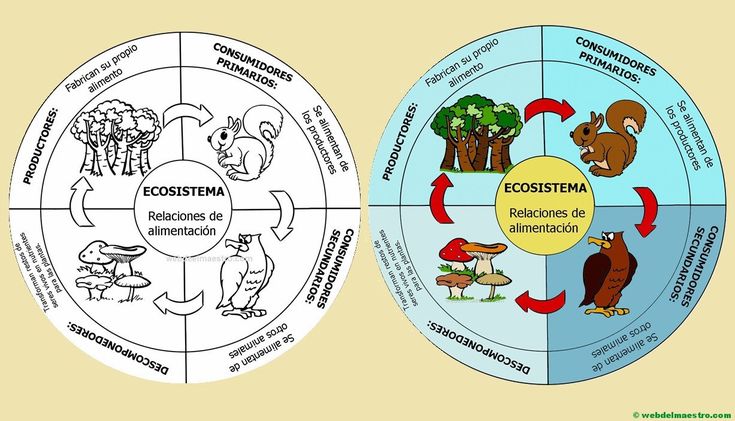 Los seres vivos que hacen uso de la naturaleza como su hábitat se pueden agrupar en función de dónde viven, crecen y se reproducen.
Los seres vivos que hacen uso de la naturaleza como su hábitat se pueden agrupar en función de dónde viven, crecen y se reproducen.
Los seres vivos que pasan la mayor parte de su vida en tierra se llaman terrestres. Esto está en contraste con los seres vivos que viven en el agua (llamados acuáticos) y los que no están creciendo en el suelo (llamados aéreos o epifíticos, especialmente de las plantas).
Animales Terrestres, conjunto de animales que ejercen sus funciones vitales en la tierra o suelo.
Categoria:
recursos naturales
Redes:
Protecting and restoring and promoting sustainable use of terrestrial ecosystems, sustainable forest management, combating desertification, halting and reversing land degradation and halting biodiversity loss – Sustainable Development
Skip to content
Goal 15: Protect and restore terrestrial ecosystems and promote their sustainable use, sustainable forest management, combat desertification, halt and reverse land degradation and halt biodiversity lossElmira Tairova2020-07-29T13:52:17-04:00
Goal 15: Protect, restore and promote sustainable use of terrestrial ecosystems, sustainably manage forests, combat desertification, halt and reverse land degradation and halt biodiversity loss
Nature is critical to our survival: nature provides us with oxygen, regulates our weather patterns, pollinates our crops, produces food, fodder and fiber for us. But it is under increasing negative influence. Human activity has changed almost 75% of the Earth’s surface, pushing the animal world and nature into a very tiny corner of the planet.
But it is under increasing negative influence. Human activity has changed almost 75% of the Earth’s surface, pushing the animal world and nature into a very tiny corner of the planet.
According to the 2019 Global Assessment of Biodiversity and Ecosystem Services, about 1 million animal and plant species are at risk of extinction, and many of them will be at risk of extinction over the coming decades. The report calls for significant changes to restore and protect nature. As the report found, the health of the ecosystems on which we and all other species depend is deteriorating faster than ever, affecting the very foundations of our economy, livelihoods, food security, health and quality of life around the world.
Deforestation and desertification caused by human activity and climate change are a major impediment to the achievement of sustainable development and affect the lives and livelihoods of millions of people. Forests are vital to sustaining life on Earth and play an important role in combating climate change.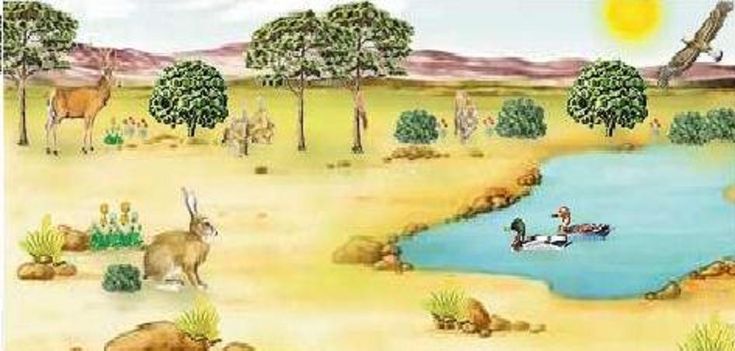 The State of the World’s Forests 2020 highlights that about 420 million hectares of trees have been lost to agriculture and other land uses since 1990. And investing in land restoration is critical to improving living standards, reducing vulnerability, and reducing risks to the economy. In addition, the health of our planet plays an important role in terms of the occurrence of zoonotic diseases, that is, diseases that are transmitted between animals and humans. As we continue to encroach on fragile ecosystems, we are bringing people into ever-closer contact with wildlife, allowing pathogens in the wild to spread to livestock and humans, increasing the risk of disease occurrence and spread.
The State of the World’s Forests 2020 highlights that about 420 million hectares of trees have been lost to agriculture and other land uses since 1990. And investing in land restoration is critical to improving living standards, reducing vulnerability, and reducing risks to the economy. In addition, the health of our planet plays an important role in terms of the occurrence of zoonotic diseases, that is, diseases that are transmitted between animals and humans. As we continue to encroach on fragile ecosystems, we are bringing people into ever-closer contact with wildlife, allowing pathogens in the wild to spread to livestock and humans, increasing the risk of disease occurrence and spread.
COVID-19 response
The COVID-19 outbreak highlights the need to address threats to ecosystems and wildlife.
In 2016, the United Nations Environment Program (UNEP) noted the global increase in zoonotic epidemics as a matter of concern. In particular, she noted that 75% of all emerging infectious diseases in humans are zoonotic in nature and that these zoonotic diseases are closely linked to ecosystem health.
“In the form of COVID-19, our planet has issued its strongest warning yet that humanity must change,” said UNEP Executive Director Inger Andersen.
In Working with the Environment to Protect People, UNEP outlines how to “build back better” – through stronger science, policies that support a healthier planet, and greener investments.
The UNEP response covers four areas:
- assistance to countries in waste management due to COVID-19;
- implementation of transformational transformations for nature and people;
- working to secure economic recovery packages that build resilience to future crises; and
- modernization of global environmental management.
To prevent, halt and reverse the destruction of ecosystems around the world, the United Nations has proclaimed the Decade of Ecosystem Restoration (2021-2030). These globally agreed responses to habitat loss and degradation will aim to strengthen political will and capacity to restore humanity’s relationship with nature.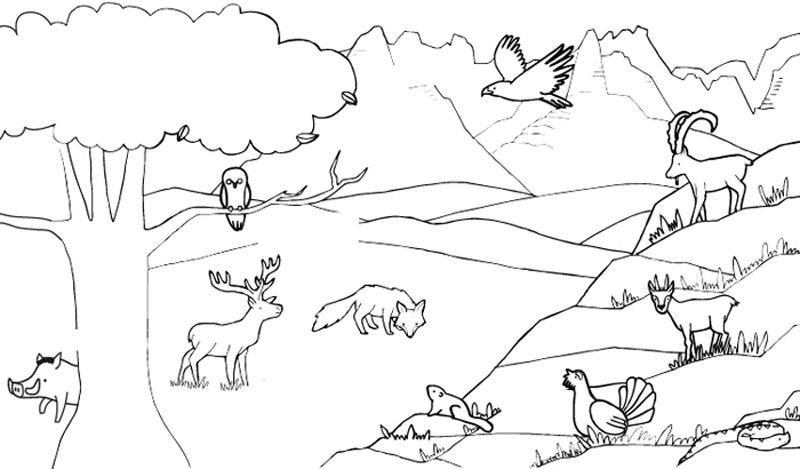 It is also a direct response to the call from the scientific community in the special report “Climate Change and the Earth” of the Intergovernmental Panel on Climate Change and to the decisions taken by all UN Member States in the Rio Conventions on Climate Change. climate and biodiversity, as well as the UN Convention to Combat Desertification.
It is also a direct response to the call from the scientific community in the special report “Climate Change and the Earth” of the Intergovernmental Panel on Climate Change and to the decisions taken by all UN Member States in the Rio Conventions on Climate Change. climate and biodiversity, as well as the UN Convention to Combat Desertification.
In addition, work is underway on a new and ambitious post-2020 Global Biodiversity Framework.
As the world responds to and recovers from the current pandemic, it will need a carefully crafted plan to protect nature so that nature can protect humanity.
Facts and figures
Tasks
Useful links
Facts and Figures
Forests
- About 1.6 billion people, including 70 million indigenous peoples, rely on forests for their livelihood.

- Forests contain more than 80 percent of terrestrial animal, plant and insect species.
- Between 2010 and 2015, about 3.3 million hectares of forest land were lost. This affected the lives of rural women who depended on these resources.
Desertification
- 2.6 billion people are directly dependent on agriculture, but 52 percent of agricultural land is moderately or severely degraded.
- Losses of arable land are 30-35 times higher than the previous figures.
- Due to drought and desertification, 12 million hectares of land (23 hectares per minute) are lost every year, on which 20 million tons of grain could be grown.
- Land degradation directly affects 74 percent of the world’s poor.
Biodiversity
- Environmental efforts continue to be undermined by poaching and the illegal wildlife trade. It is estimated that the markets where such illicit trade takes place cover about 120 countries, and their volume is about 7,000 types.

- Of the 8,300 known animal breeds, 8 percent are extinct and 22 percent are on the brink of extinction.
- Of over 80,000 tree species, less than 1 percent has been studied for potential use.
- About 20 percent of animal proteins for 3 billion people come from fish. About 30 percent of marine catches come from just ten species of fish, and 50 percent of aquaculture production comes from ten species of fish.
- More than 80 percent of the human diet consists of plants. 60 percent of calories come from just three grains – rice, maize and wheat.
- Nearly 80 percent of the rural population in developing countries use traditional herbal and plant medicine.
- Microorganisms and invertebrates play a key role in the functioning of the ecosystem, but their importance is still little understood and not recognized.
Targets
- arising from international agreements
- 15.
 2 By 2020, promote sustainable management of all types of forests, halt deforestation, restore degraded forests, and significantly increase afforestation and reforestation worldwide
2 By 2020, promote sustainable management of all types of forests, halt deforestation, restore degraded forests, and significantly increase afforestation and reforestation worldwide - 15.3 By 2030, combat desertification, restore degraded lands and soils, including lands affected by desertification, droughts and floods, and strive to ensure that land degradation does not occur globally
- 15.4 By 2030, conserve mountain ecosystems, including their biodiversity, in order to enhance their ability to provide benefits for sustainable development
- 15.5 Take immediate and meaningful action to halt the degradation of natural habitats, halt the loss of biodiversity, and by 2020 ensure the conservation and prevention of the extinction of endangered species
- 15.6 Promote equitable distribution of benefits arising from the use of genetic resources and promote adequate access to such resources under internationally agreed terms
- 15.7 Take immediate action to end poaching and smuggling of protected species of flora and fauna and address both the demand for and supply of illegal wildlife products
- 15.
 8 By 2020, take measures to prevent the introduction of alien invasive species and significantly reduce their impact on terrestrial and aquatic ecosystems, and take measures to prevent the reduction or destruction of priority species
8 By 2020, take measures to prevent the introduction of alien invasive species and significantly reduce their impact on terrestrial and aquatic ecosystems, and take measures to prevent the reduction or destruction of priority species - 15.9 By 2020, mainstream the value of ecosystems and biodiversity into national and local development planning and processes, and into poverty reduction strategies and plans
- 15.a Mobilize and significantly increase financial resources from all sources for the conservation and sustainable use of biological diversity and ecosystems
- 15.b Mobilize significant resources from all sources and at all levels to finance sustainable forest management and provide developing countries with adequate incentives to apply such management practices, including for forest conservation and restoration
- 15.c Intensify global efforts to combat poaching and smuggling of protected species, including by enhancing local people’s opportunities to earn a livelihood in an environmentally sound manner
useful links
In the first half of 2022, there was a dramatic drop in real monthly wages around the world.
 This is stated in the report of the International Labor Organization (ILO) published on Wednesday. Experts attribute the decline to inflation, the consequences of the COVID-19 pandemicand […]
This is stated in the report of the International Labor Organization (ILO) published on Wednesday. Experts attribute the decline to inflation, the consequences of the COVID-19 pandemicand […]Elmira Tairova2022-11-30T07:00:00-05:0030 Nov 2022|
The Internet is becoming more accessible, but about a third of the world’s inhabitants still do not have the opportunity to use the World Wide Web. The International Telecommunication Union (ITU) launched on Wednesday its annual Facts and Figures publication, which contains the latest data on global […]
Elmira Tairova2022-11-29T07:00:00-05:0029 Nov 2022|
Independent UN experts welcome the adoption in the United Nations General Assembly of the resolution proposed by the group of African countries, which provides for the expansion of international cooperation in the field of taxation and the development of an appropriate convention. Learn more at UN News
Targets
goal 1
goal 2
goal 3
goal 4
goal 5
goal 6 9000 8
Target 9
Target 10
Target 11
Target 12
Target 13
Target 14
Target 15
Target 2
Page load link
Go to Top
Ecosystem – Technical Library Neftegaz.
 RU
RUThis is both a biosystem and the interconnection of all services of a company or project
An ecosystem is a biosystem consisting of a community of living organisms (biocenosis), their habitat (biotope), a system of connections that exchanges matter and energy between them.
Ecological system
Classification of ecosystems is carried out according to:
- location in space,
- scale,
- type of occurrence,
- source of energy.
Ecological system levels
The ecosystem includes different functional groups of organisms:
- primary producers – produce organic substances from inorganic substances using sunlight or chemical energy. These are green plants capable of photosynthesis, autotrophic bacteria, archaea;
- consumers eating producers, other consumers or destructors.
 These include people and animals. They emit carbon dioxide (SO 2 ). Their remains, feces, wool, hair are a source of chemical energy;
These include people and animals. They emit carbon dioxide (SO 2 ). Their remains, feces, wool, hair are a source of chemical energy; - destructors (microorganisms) that decompose and then mineralize the remains of producers and consumers, their excrement or organs (fallen leaves, etc.).
Digital ecosystem
In connection with the development of digitalization and information technology, a new use of the term Ecosystem has appeared.
Ecosystem – the interconnection of all company services.
The Internet has changed lives.
Multifunctional mobile devices have changed people’s communication, channels for promoting products and services.
Each company strives to create its own ecosystem and make it the most in demand.
World digital majors of ecosystems: Apple and Google.
In the Russian Federation, Yandex is rapidly developing its ecosystem.
The Apple ecosystem includes music, its storage, photo library, video, archives, history recording, passwords.
The Apple ecosystem connects services with a common design, IT platform, accessories, stores.Basic concepts of ecosystems:
- use the principle of one window, working in a single mobile application.
- adapts to customer requirements as data grows:
- forming a single client profile,
- summarizing acquisitions in the ecosystem,
- forming a targeted offer to the client.
- allow removing geographic restrictions for business development for small and medium-sized manufacturers of products and services.
- , like the usual systems of ecosystem interaction, require regulation.
- there are risks of unfair competition, discrimination of participants, monopolization of technologies, misuse of personal data of customers, insufficient level of information security and protection against fraud.
- services not only for individuals, but also for legal entities.
Ecosystem structure:
- set of platforms that provide various products and services;
- availability of online and offline services;
- may be specialized ecosystems built around one or more basic needs;
- ecosystems can develop their services not only for individuals, but also for clients – legal entities.


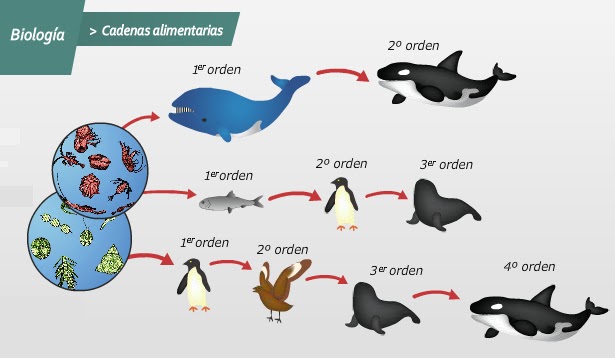

 2 By 2020, promote sustainable management of all types of forests, halt deforestation, restore degraded forests, and significantly increase afforestation and reforestation worldwide
2 By 2020, promote sustainable management of all types of forests, halt deforestation, restore degraded forests, and significantly increase afforestation and reforestation worldwide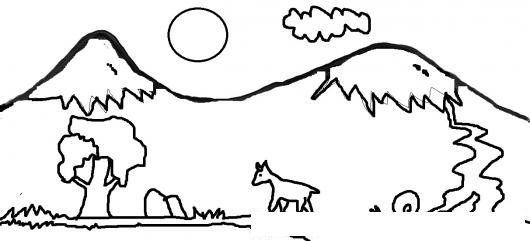 8 By 2020, take measures to prevent the introduction of alien invasive species and significantly reduce their impact on terrestrial and aquatic ecosystems, and take measures to prevent the reduction or destruction of priority species
8 By 2020, take measures to prevent the introduction of alien invasive species and significantly reduce their impact on terrestrial and aquatic ecosystems, and take measures to prevent the reduction or destruction of priority species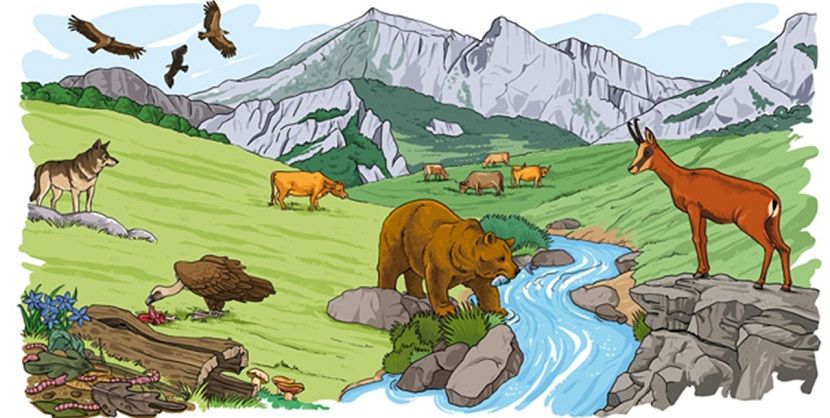 This is stated in the report of the International Labor Organization (ILO) published on Wednesday. Experts attribute the decline to inflation, the consequences of the COVID-19 pandemicand […]
This is stated in the report of the International Labor Organization (ILO) published on Wednesday. Experts attribute the decline to inflation, the consequences of the COVID-19 pandemicand […] RU
RU These include people and animals. They emit carbon dioxide (SO 2 ). Their remains, feces, wool, hair are a source of chemical energy;
These include people and animals. They emit carbon dioxide (SO 2 ). Their remains, feces, wool, hair are a source of chemical energy;